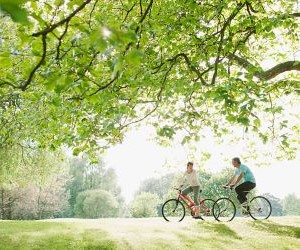Learn how to deal with punctures on long rides with prevention tips, repair techniques, and smart gear choices to keep rolling without stress.
HOW DO I CHOOSE THE RIGHT SPORTS BRA FOR FEMALE CYCLISTS?
For female cyclists, the sports bra is as essential as the bike itself. Long hours in the saddle demand comfort, breathability, and proper support to prevent chafing and discomfort. Unlike running, where impact control dominates, cycling requires bras designed for sustained positioning, ventilation, and seamless integration with jerseys and bibs. This guide explores how to select the perfect sports bra for cycling by examining support levels, fabric technologies, strap designs, and fit strategies that maximize both comfort and performance.

Understanding support levels
The first factor when choosing a sports bra is understanding support levels. Different activities demand different levels of breast support. Running and HIIT need high-impact bras, while cycling—being lower impact—often requires medium support, optimized for posture and comfort over long durations.
Low, medium, and high support
Low-support bras suit yoga or walking but fail to provide stability during rides. High-support bras, though secure, can be restrictive and trap heat. For most cyclists, medium support strikes the balance: enough stability without compromising breathability.
Low support: light compression, minimal structure.
Medium support: compression plus shaping, best for cycling.
High support: encapsulation, padding, and strong straps for running or high-impact.
Cycling-specific considerations
Cycling involves sustained forward-leaning positions. A good cycling bra minimizes pressure points under bib straps and allows upper body mobility. Wide, flat straps prevent digging into shoulders, and minimal seams reduce friction against jerseys. The goal isn’t bounce control—it’s comfort in posture and freedom to breathe.
Fabric technologies and ventilation
Fabric choice defines comfort on long rides. A high-quality sports bra must wick sweat, resist odor, and dry quickly. Modern cycling bras incorporate technical fabrics that rival jerseys in performance.
Moisture management and quick-dry fabrics
Cycling generates sustained perspiration, especially under layers. Fabrics like polyester blends, nylon, or merino wool manage moisture effectively. Quick-dry materials prevent sweat buildup that can cause chafing, rashes, and heat discomfort.
Polyester blends: lightweight, durable, and quick-drying.
Nylon: smooth texture, strong wicking, but may retain odor.
Merino wool: natural odor resistance, soft on skin, better for cooler rides.
Ventilation and breathability
Mesh panels and laser-cut ventilation zones improve airflow, especially across the back and underbust. Since jerseys and bibs already add layers, ventilation is critical. A bra that traps heat reduces endurance by raising core body temperature and heart rate.
Seamless design and chafe prevention
Long rides magnify small irritations. Bras with bonded seams, seamless cups, or flatlock stitching reduce rubbing against skin. Wide underbands distribute pressure evenly, preventing hotspots during 4–6 hour rides. Chafe prevention is not a luxury—it’s performance insurance.
Fit, straps, and long-ride comfort
The right fit transforms a sports bra from tolerable to invisible. Fit encompasses band size, cup design, strap configuration, and adjustability. Comfort depends on how well these elements integrate with cycling posture and gear.
Band and cup fit
The band provides most of the support, so it should sit snug but not restrictive. Cups should fully encapsulate without gaps or spillage. Cyclists often prefer unpadded or lightly padded cups to minimize bulk under jerseys while still preventing nipple chafing.
Snug band = stability without restricted breathing.
Full cup coverage = reduced friction.
Minimal padding = better integration with jerseys.
Strap design and integration with bibs
Straps make or break long-ride comfort. Racerback or cross-back designs reduce slipping and align with bib straps, avoiding overlap that digs into shoulders. Adjustable straps allow micro-tuning for different layers or seasonal changes.
Testing comfort for endurance
The ultimate test is the long ride. Cyclists should trial new bras on shorter sessions before committing to multi-hour rides. Comfort checks include breathing ease, freedom of arm movement, and absence of hot spots. A bra that feels “invisible” is the gold standard.
In conclusion, choosing the right sports bra for cycling is a blend of science and personal preference. Support levels, fabric technologies, and fit all interact to shape comfort and performance. For female cyclists, the sports bra isn’t just gear—it’s part of the engine that keeps them riding strong, mile after mile.
YOU MAY ALSO BE INTERESTED






